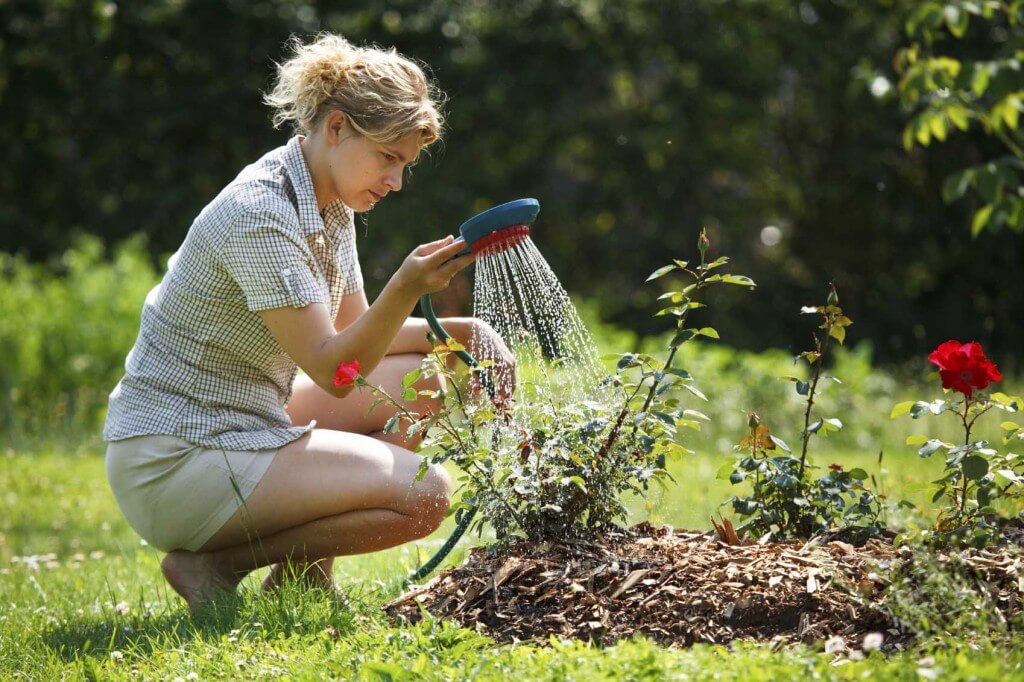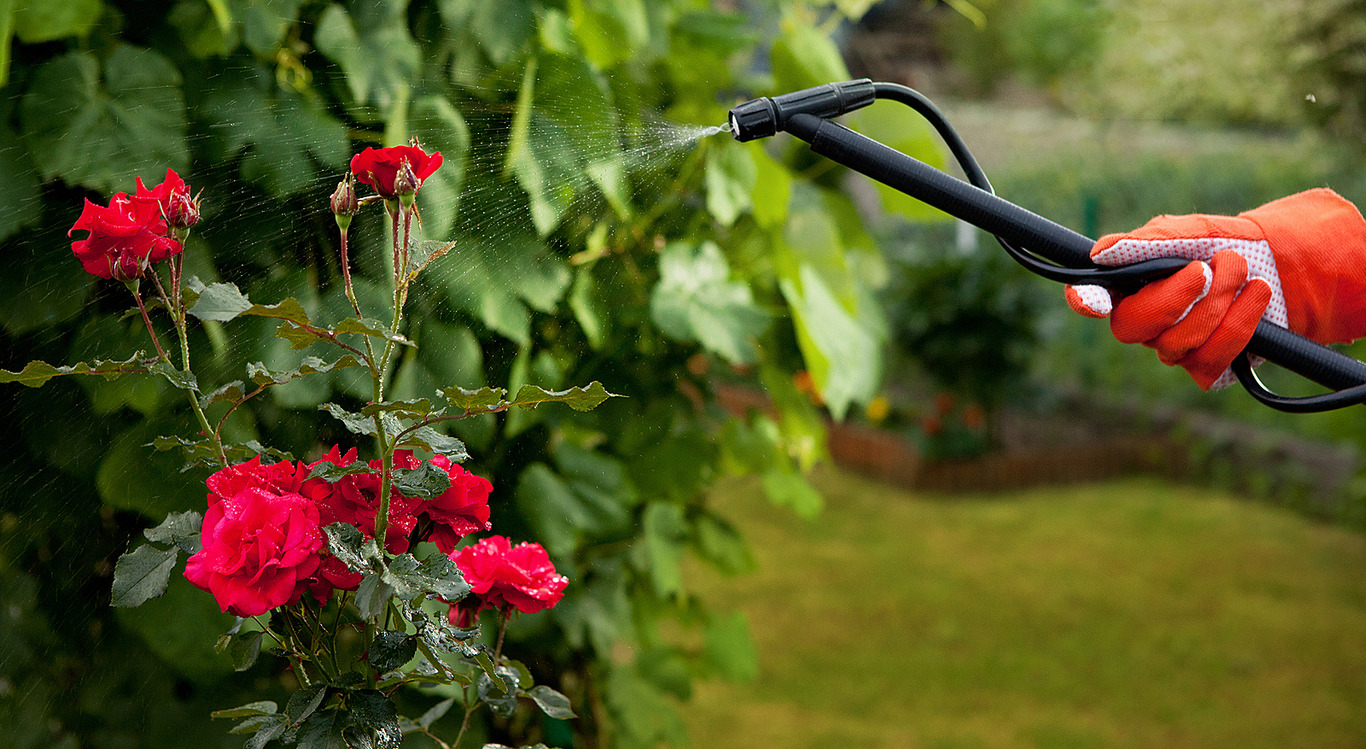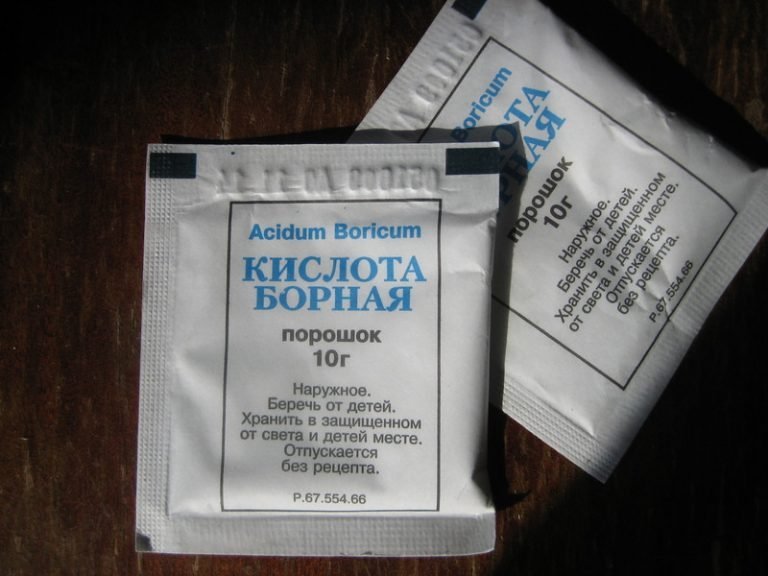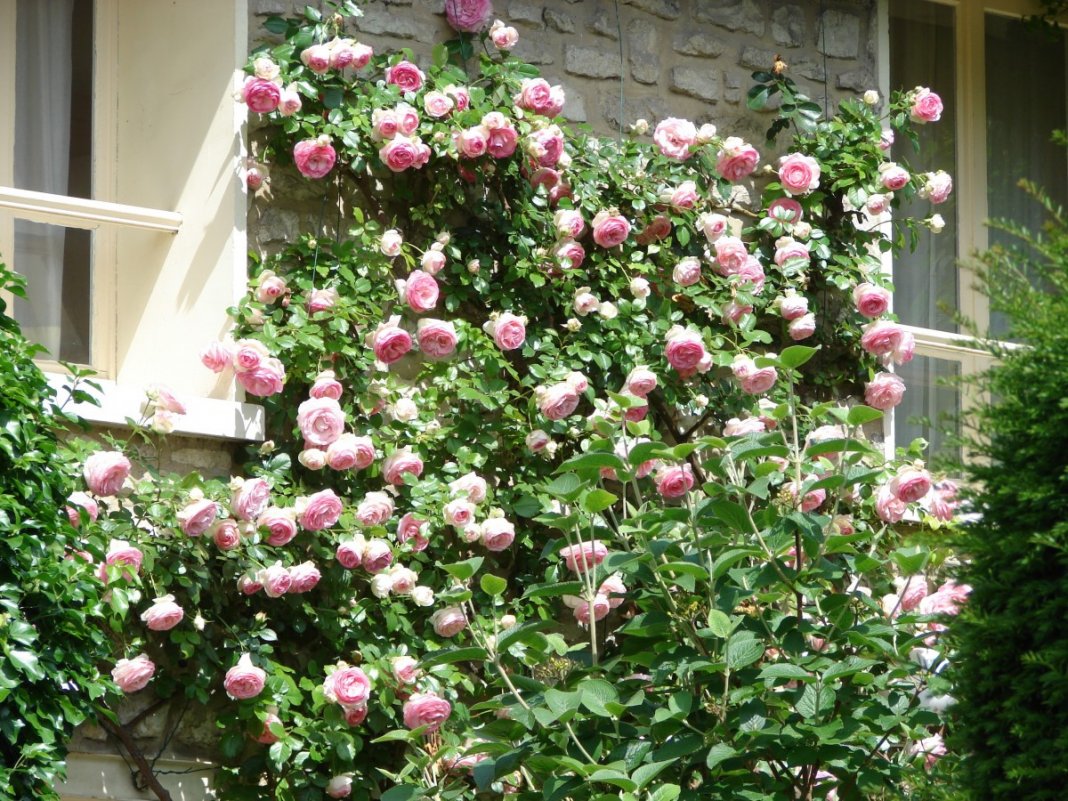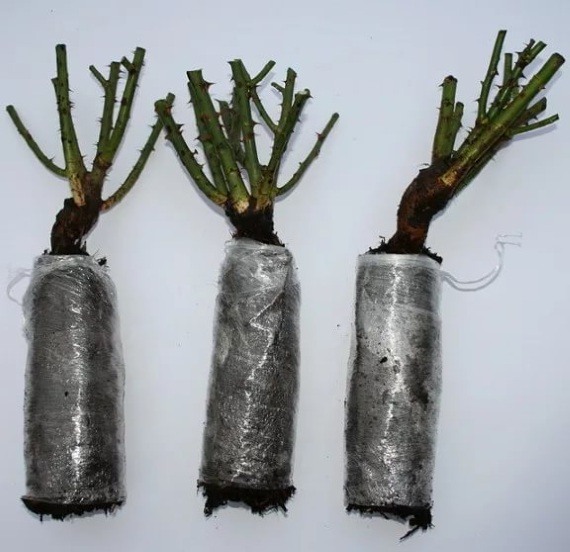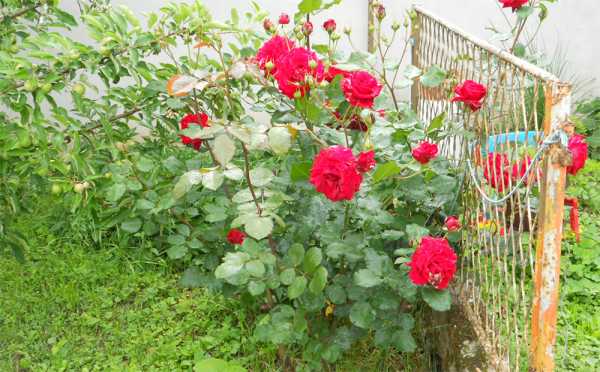Content:
One of the most exquisite garden flowers is the climbing rose. Most gardeners think it is worth the time and effort spent growing it. The rose is annual and perennial with a wide variety of colors. Its shoots can grow up to several meters in length. The diameter of the buds ranges from 2.5 to 12 cm. Real climbing roses have a lot of flowers, which are located along the entire length of the shoots. There are a great many of them, so the flowers were divided into several groups: semi-climbing, climbing and curly. This plant is ideal for yard decoration, but in order to grow a strong and beautiful bush, you need to know all the nuances of planting and caring for it.
Climbing roses: care and cultivation
All climbing plants are whimsical, and climbing rose was no exception. When planting this species, you need to adhere to certain requirements:
- A climbing rose needs support. A fence or arch is ideal. You need to tie the shoots with soft material so as not to harm the stems. From the very beginning, it is recommended to form the direction of the shoots, distributing them in different directions.
- This type of plant does not grow in the shade, so the planting site should be sunny from morning until lunchtime. The sun helps dry the dew, which can trigger fungal infections. In the hottest period of time (after lunch), the flower should be in the shade, as hot rays can provoke burns. The south and southwest side will be the ideal place for the plant. Proper lighting helps the growth to ripen, which will endow a large number of buds the next year.
- When planting a sapling, it is necessary to take into account that nothing grows within a radius of 50 cm. If the bushes grow near the wall, it is worth keeping a distance of at least 50-100 cm.
- The optimal soil for a climbing rose should contain clay and sand. This plant needs a soil rich in nutrients, so be sure to add humus or humus. Bone meal, which is a source of phosphorus, has a positive effect. The soil for planting is prepared in 6 months. If this period is missed, then for a month.
Climbing roses grow very quickly, so they need timely pruning.
How to properly care for a climbing rose outdoors
Like all ornamental plants, climbing roses require some care. In order for the flowers to delight the owners of the site with their abundant flowering for several years, it is important to know some subtleties.
Climbing rose care in the first year
The first year, roses take root and do not always delight with flowering buds, but this is not the main thing. It is necessary for the bush to grow roots and release healthy stems. This is important before the first hibernation. In conditions of regular rains, the plant does not require frequent watering.The only period when it is recommended to water the bushes is when the seedlings take root (if the weather is hot). When the bush is formed and actively growing, it can be watered only in the summer.
In the first year of a climbing rose's life, dried and damaged branches are pruned. There is no need for short trimming.
Caring for climbing roses in the second year
In the second year of life, the flower does not require painstaking care, it is enough to water it abundantly (once every 10 days), feed and cut it on time. Young stems that grow on the sides need pruning. Branches that have faded also need to be pruned in order to provoke new flowering. The soil around the flower is mulched with grass, straw or sawdust.
In subsequent years, organic feeding is needed. During the growing season, 4 additional dressings are required. Medium pruning can be done to rejuvenate the bush. If all these requirements are met, the plant will be healthy and beautiful.
If planted in spring, the flowering of the bush will be delayed for a couple of weeks. Before planting in the ground, the seedling is shortened by 3 buds. Inexperienced gardeners prefer to buy seedlings in a pot and at the end of spring they are planted in the soil along with a lump of earth on the roots.
In order for the plant to please the eye with regular and lush flowering, you need to properly care for it.
Necessary care of climbing roses in summer
In summer, flower care consists of the following activities:
- monitor the possible presence of aphids and other pests;
- prevention of rust, powdery mildew, aphids;
- abundant watering in the heat;
- pruning blooming buds;
- loosening the soil;
- removing weeds near the bush;
- second root feeding;
- distribution of shoots;
- budding;
- garter shoots;
- second pre-autumn feeding.
How to care for a climbing rose in autumn
In autumn, flower care comes down to the following procedures:
- feeding with bone meal;
- preparation of holes for planting new roses in spring;
- pinching shoots;
- protecting the soil from drying out;
- breaking off dried buds;
- cutting cuttings for propagation;
- pruning old and damaged shoots;
- cleaning the soil around the bush from debris and weeds, hilling;
- clearing bushes from leaves and removing from a support (late autumn).
Care and cultivation of a climbing rose
There is a decorative type of perennial shrub called a climbing rose. Despite the fact that roses are similar to each other, they still have some differences:
- curly rose reaches 15 m in length;
- stems are able to cling to the support themselves due to antennae;
- the bush is easy to form.
To grow a beautiful and healthy bush, you need to know about the important points:
- You need to plant a rose in a sunny, ventilated place. Optimal south and southwest side. Under the most comfortable conditions, the rose will begin to bloom in the second year.
- Open ground should be fertile with drainage.
- You need to plant the bushes at a distance of at least 50 cm from each other. Over the years, the roots will have little room and they will deplete the soil around the bushes.
- For a healthy and well-formed bush, timely pruning is needed. It is recommended to prune in late August - early September.
- The garter of the rose takes place early in order to control the direction of growth of the shoots.
- The curly rose is frost-resistant, but it still needs to be wrapped in the winter. Preparation for wintering begins in the fall. To begin with, the loosening of the soil and its fertilization stop. The number of waterings is also decreasing. Bushes take refuge during the onset of the first frosts. In order for the rose to withstand the cold well, when wrapping it up, it is worth leaving an air gap between the film and the crown.
- If it is possible to remove the rose from the support, it can be rewound with twine and laid on a layer of leaves. Top is also covered with leaves, burlap or oilcloth.
- Most often, curly roses are planted in groups. Other types of flowers should not be located nearby. Trees are considered an exception - apple, pear or mountain ash.
How to cover a climbing rose for the winter
One of the important procedures for caring for a rose is its shelter for the winter. In frosts, the flower runs the risk of dying, so you need to cover it on time and correctly.
With the onset of the first cold weather, the growing season of roses stops. But since the weather is changeable, and the temperature can rise, provoking sap flow, then with the subsequent cold snap, the juice freezes, which causes the stems and roots to suffer. As a result, the rose dies. But you can't wrap your roses too much, you should definitely leave access to oxygen. This will quickly dry the protruding sap and heal cracks, if any.
Preparation for wintering
In early August, you need to feed the rose bushes. A nutrient solution can be made from the following ingredients:
- superphosphate - 25 g;
- boric acid - 2.5 g;
- potassium sulfate - 10 g.
Everything is diluted with 10 liters of water. This volume is enough for 4 m² of land.
Another top dressing is performed in September:
- superphosphate - 15 g;
- potassium sulfate - 16 g.
Also dilute with 10 liters of water.
Shelter methods
One of the most successful shelter methods is considered to be the laying of wooden panels in the form of a roof. This method is suitable for roses that can be removed from the support. The most suitable canvas should be 80 cm high, the length depends on the size of the bushes. To keep the structure secure, pegs are driven into the ground for support. The use of wooden boxes is allowed. In the first and second methods, you must additionally cover the top with a film.
Can be covered without building structures. The shoots are carefully removed from the supports, cut off, collected in one shock, tied with a tourniquet and laid on the leaves. Near the root, a mound is made of soil mixed with peat. You can cover on top with spruce branches or cover with dry leaves. Cover with a film on top.
If it is not possible to remove the rose from the support, pre-cut dry branches, weak sprouts, pluck the leaves, then wrap it with spruce branches (spruce), top with burlap or foil and tie it with a tourniquet.
When using high-quality materials and properly wrapping a climbing rose, you can not worry, since the flower will survive the winter frosts 100%.
Tips from experienced summer residents
Nowadays, almost every summer cottage is decorated with climbing roses. Having gained experience in breeding and growing rose bushes, experienced gardeners are happy to share their knowledge.
- You need to fasten the shoots carefully so as not to harm the fragile stems. It is not superfluous to wrap the place where the garter takes place with a soft cloth. It is important not to overtighten, so that the process of juice movement does not stop in the stems.
- Most roses are propagated by grafting to the root, which must not be buried. A climbing rose, on the contrary, is planted 10 cm deeper. In this case, the roots do not grow.
- By removing dried flowers, the climbing rose strengthens.Pruning re-flowering varieties will ensure that subsequent buds are larger and brighter.
Treating seedlings before planting is an important requirement. For a flower to be healthy, several requirements must be met:
- the roots must be saturated with water, so it is worth placing them in water for a day;
- the roots and stems are cut so that the total length of the bush is 20–30 cm;
- you can process the cut site with charcoal or garden pitch;
- the root is recommended to be powdered with ash.
When forming a bush, you should not direct all the shoots up. This can lead to depletion of the flower, and all the buds will be located only on the top of the head. The best option is to spread the shoots in a fan shape. Their free arrangement provokes active and healthy flowering.
Today, almost all varieties of roses are propagated by grafting, so it is important to remove wild growth in time. Alien wattle fences can deplete the plant, so the flower can lose its varietal qualities. It is easy to recognize the growth: it usually appears at the bottom with smaller, lighter leaves and more thorns.
- All types of roses love the sun and do not tolerate places where stagnant water or swampy conditions.
- The secret of a rich rose bloom is in the right garter. The maximum number of stems should be horizontal.
- The correct shape of the pit for planting a seedling should be at least 50 × 50 cm.It is worth pouring some loose soil back to the bottom.
- If the support for the flower is in the form of a wide arch, the shoots must be fixed not only on top, but also passed inside the arch. With this method, it will not look empty from the inside.
- The support must be installed simultaneously with the planting of the rose. This is the only way to be sure that the roots of the flower will not be damaged.
Climbing fold is a rather whimsical plant. From the moment of planting to the first buds, it is worth carrying out a maximum of procedures that are positive for the flower. Preliminary soil preparation, proper watering, timely pruning and top dressing give every chance that the rose shrub is healthy and decorates the summer cottage for many years.

